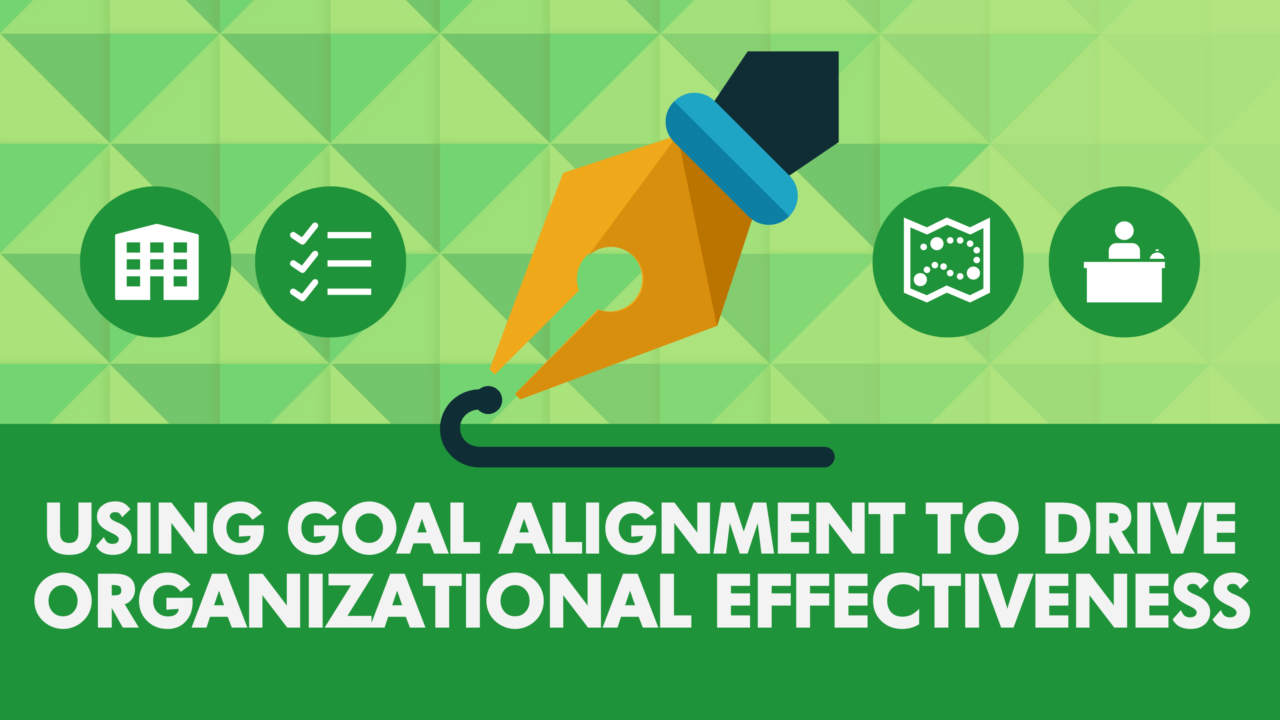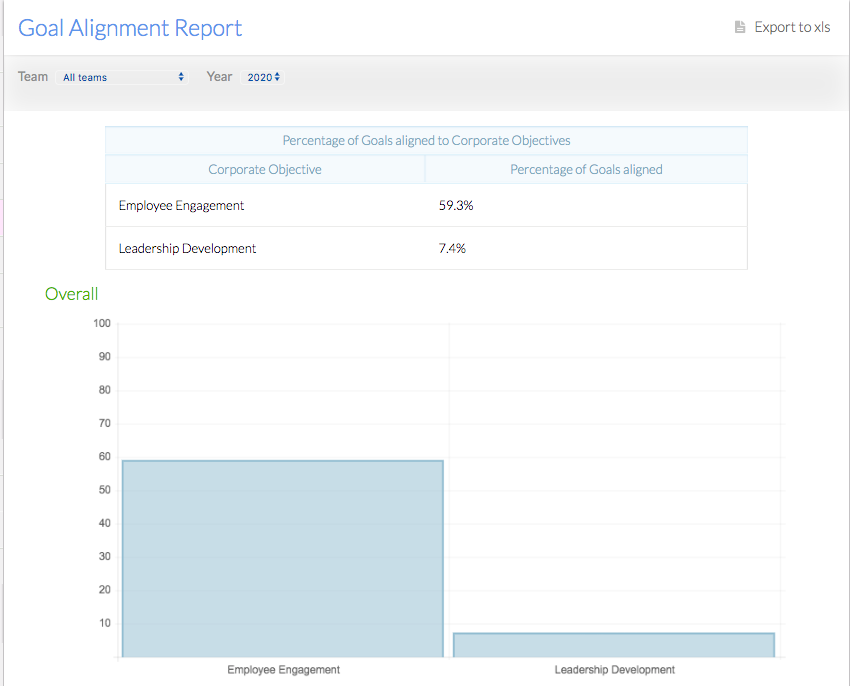
Using Employee Goal Alignment to Drive Organizational Effectiveness
What is Organizational Effectiveness?
Organizational effectiveness can be defined as the degree to which an organization achieves its goals. Quite literally, how effective an organization is in achieving its intended outcomes and results. While this definition may seem obvious, methods by which to drive organizational effectiveness are not always as apparent. Let’s discuss why it's important to focus on these metrics of success.
The Impact of Organizational Effectiveness - Or Lack Thereof
Organizational effectiveness may seem like a big picture concept for which only senior level employees have concern, but in reality, it is of critical importance no matter where you stand within an organization.
It goes without saying that the owners and investors of a company have a vested interest in organizational effectiveness. Quite simply, the success of the company has direct financial implications for these individuals.
It also goes without saying that manager level employees are in a similar boat. While they may not have as direct of a financial tie as their company owner or investors, it’s their job to ensure that organizational effectiveness is achieved. The operational leadership groups are typically held accountable for ensuring that key goals and objectives get met within their respective teams.
While individuals that hold non-management (a.k.a. “Individual Contributor”) level positions may be further removed from the direct influence of a company meeting its objectives, there are many other benefits that directly impact them if the company is successful. For example, if an employee has any desire to further their career, or even just earn a performance based bonus, opportunities will be far more plentiful within a thriving organization.
Every employee within an organization should understand the interdependency of each team and department, and ideally should all want their company to succeed. It’s important to illustrate to employees that the success of their company will translate to tangible benefits for them.
Clearly aligning company goals with individual employees and promoting collaboration are effective means by which to drive organizational effectiveness.
Driving Organizational Effectiveness with Employee Goal Alignment
1. Communicate your direction
Your employees can’t progress towards a company goal if they don’t know what it is! They should be given clear business direction and rationale from those who established those goals. On a more ongoing basis, managers should set employee projects and tasks directly in relation to those strategic level goals, so that everyone understands the connection and relationship on what they’re working towards. Clearly aligning goals and establishing context is essential for when setting clarity of direction.
Communication is critical to when goals are not met, as well. Let employees know when and why goals were not achieved, not to shift blame, but rather to identify gaps in existing processes and opportunities to improve. Sharing responsibilities for both successes and missed targets is fundamental for building a team based culture.
2. Keep all levels in mind
Entry-level and more task-focused employees may have a harder time seeing how their contributions impact company-wide objectives. In the case of financial goals, they may never have fathomed the numbers you’re trying to reach.
Organizational objectives and goals should be presented in a way that shows how every team member – even support staff and juniors – shares in its success. A common approach here is to set a goal in “Operational Excellence” which usually speaks to quality of everyone’s work and states that regardless of position, everyone influences the outcome.
While junior employees may not directly influence results, they do hold positions that support those who do and therefore have value add.
3. Provide clear alignment with company goals
It’s one thing to ensure that each and every employee is aware of company objectives, but quite another to ensure that each employee understands their specific responsibilities. It is important that employees understand how exactly they are intended to contribute to larger goals.
If an employee isn’t aware how their duties fit into the bigger picture, it’s easy for a disconnect to exist between the two. An employee will complete their tasks simply because they’ve been instructed to do so, not because they believe they are contributing real value to the company. Establishing a clear line of site can drive commitment and establish engagement. Every role matters.
Let’s add a little bit of context with an example.
An employee, let’s call him Zach, works at a large company whose target audience has historically been focused on large businesses.
Zach is tasked to create a PowerPoint presentation outlining the advantages of their product in a small business setting.
Zach knows that small businesses make up only a small fraction of his organization’s profits, and he therefore considers the project to be somewhat trivial in nature.
He completes the project, because he’s been told to, but he doesn’t go out of his way to produce his best work. Why would he? In his mind, this is not a priority, and there will be more important things for him to do in the near future.
Compared to...
Zach is made aware that his organization has a new goal; they want to be viewed by the public as an organization that caters to businesses of all sizes and treat them all with an equal importance.
Zach is then tasked to create a PowerPoint presentation outlining the advantages of their product in a small business setting.
Based on the given context and alignment with the organization's new initiative, Zach understands that his work will contribute to the overall company goal. While it may be true that small businesses produce a lesser amount of their profits, it is important to treat them with an equal level of importance in order to achieve the company goal. How would it look if Zach put together a minimal effort presentation now?
Instead of holding the mentality that he’s been given a low priority task, Zach completes the presentation to the best of his ability, because he knows it’s an important part of his organization’s new goal.
4. Measure & acknowledge performance
Understanding the importance of their contributions is a great way to start driving organizational effectiveness via employee engagement, but there is more that you can do!
It’s important to measure performance and acknowledge both a job well done and when an area has opportunity for improvement. Using predefined metrics to track performance and employee progress toward a goal has a wide range of benefits.
Offering performance based financial incentive is a tested and true way to drive employee performance. If employees have goals that are aligned with overall organizational goals, and they have a vested interested in putting forth an optimal performance, everyone wins!
While incentives such as these may provide initial motivation, it is important to acknowledge performance on an ongoing basis. This is especially true in the case of more complex projects that can span a long period of time. Acknowledging an employee's efforts can go a long way.
If the data shows that an employee is progressing toward their goal at a reasonable rate, try communicating encouraging statements such as: “I know there is still a long way to go on this project, but I can see how much work you’ve already put in, and I’m very pleased with how things are progressing. Keep up the good work!” This is a simple, yet effective way to sustain higher levels of engagement.
5. Leverage HR tools for maximum alignment
In the context of a larger organization, or even just a complex project, cascading goals and alignment between different levels of the company can get complicated in a hurry. It’s in management (and everyone else’s) best interest to be as organized as possible. Enter HR tools!
Leveraging HR technology to help keep everyone on the same page is becoming more and more essential. Tools that allow you to easily align company goals with individual employee goals, track progression toward these goals and measure individual performance are a huge help!
You can leverage these types of HR tools further by analyzing that data that they produce in order to make informed business decisions. For example, if you were to implement a new bonus allotment structure, you could assess whether it’s driving a significant increase in performance with the data you collect.
Producing concrete, quantifiable data is extremely useful for in board meeting scenarios. Being able to quantify the impact that your employee goal alignment efforts are having to investors is a great way to showcase the performance of your company.
Goal Alignment in Practice
Sprigg’s Goal Alignment Report answers the question: “Are people working on the right things?” An instantly generated graphic report (ideally pulled at end of goal-setting cycle) can identify what percentage of people have chosen to align their individual goals to that of the Corporate Objectives.

Want to learn more about our goal alignment tools?
We would love to introduce you to Sprigg. Hit the “Request a Demo” button and we'll customize a demo just for you, lead by one of our senior HR professionals. We look forward to connecting!



